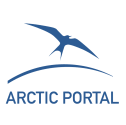Marco Dordoni
This article contributes to understanding the strategic shift in NATO’s posture in the High North, denoting the European sector of the Arctic. Following the Cold War – during which the region held strategic relevance for the Alliance – NATO progressively deprioritized the area, redirecting its focus toward other geographic and thematic threats. This began to change during the 2010s, with Russia’s re-emergence as a central strategic concern from 2017 onward. The war in Ukraine in 2022 marked a watershed moment, making NATO’s increasingly securitized approach to the High North more explicit and subject to closer analysis (Østaghen, 2024; Bykova, 2024). Building on the argument that NATO has gradually re-positioned itself as a credible security actor in the region, this study investigates whether and how this shift has been accompanied by the development of a securitizing narrative disseminated through a particularly effective regional medium: Arctic conferences (Steinveg, 2023). By analyzing selected speeches delivered at these events and drawing on the theoretical frameworks of the Copenhagen School of Securitization (Buzan et al., 1998) and the Strategic Narrative approach (Miskimmon et al., 2013), the article examines the extent to which recurring terminology and framings have contributed to shaping and legitimizing NATO’s growing presence and activities in the region. The study explores the communicative effects of such discourse on policy outcomes, showing how NATO not only articulates threats in the Arctic but also actively shapes the conditions for strategic action through its persuasive and discursive practices. The article considers the broader implications of NATO’s expanding role and the spread of the securitizing narrative in the Arctic, questioning whether this increasingly confrontational dynamic, when combined with Russia’s assertive posture, has served to enhance stability or, conversely, to further destabilize the region (Boulègue, 2019). Furthermore, it raises questions about the scope of the conference space in fostering dialogue among Arctic states or enhancing division.

